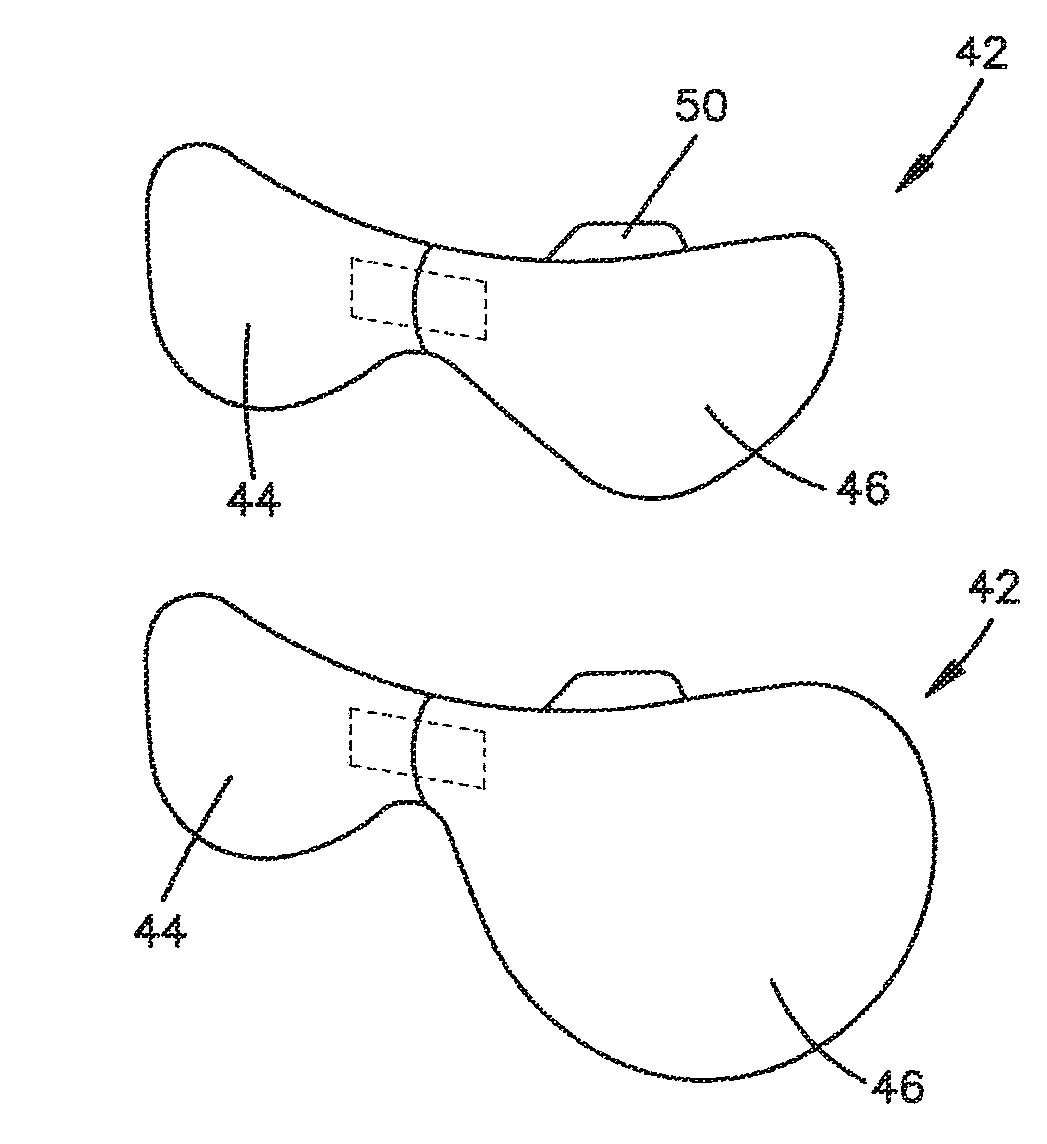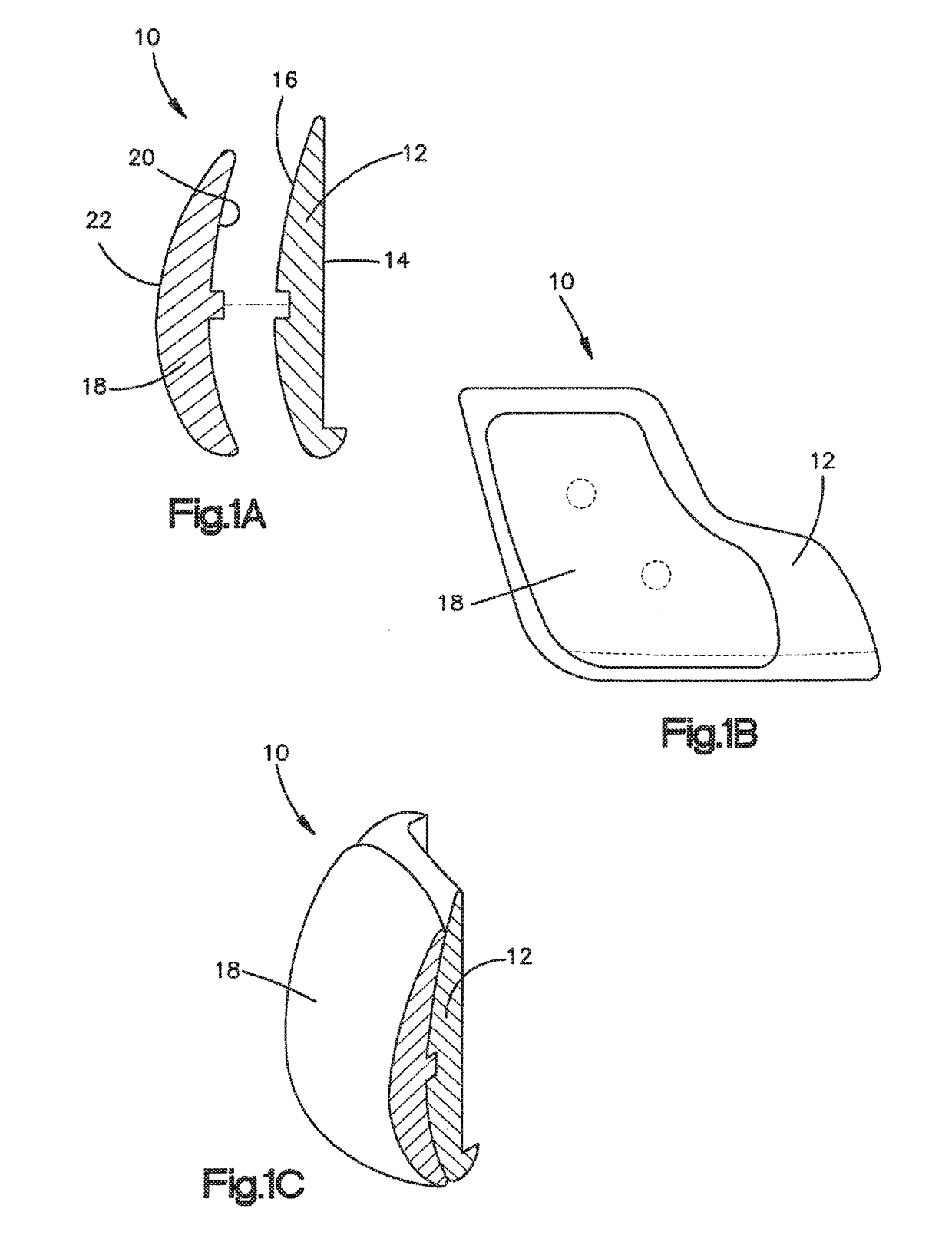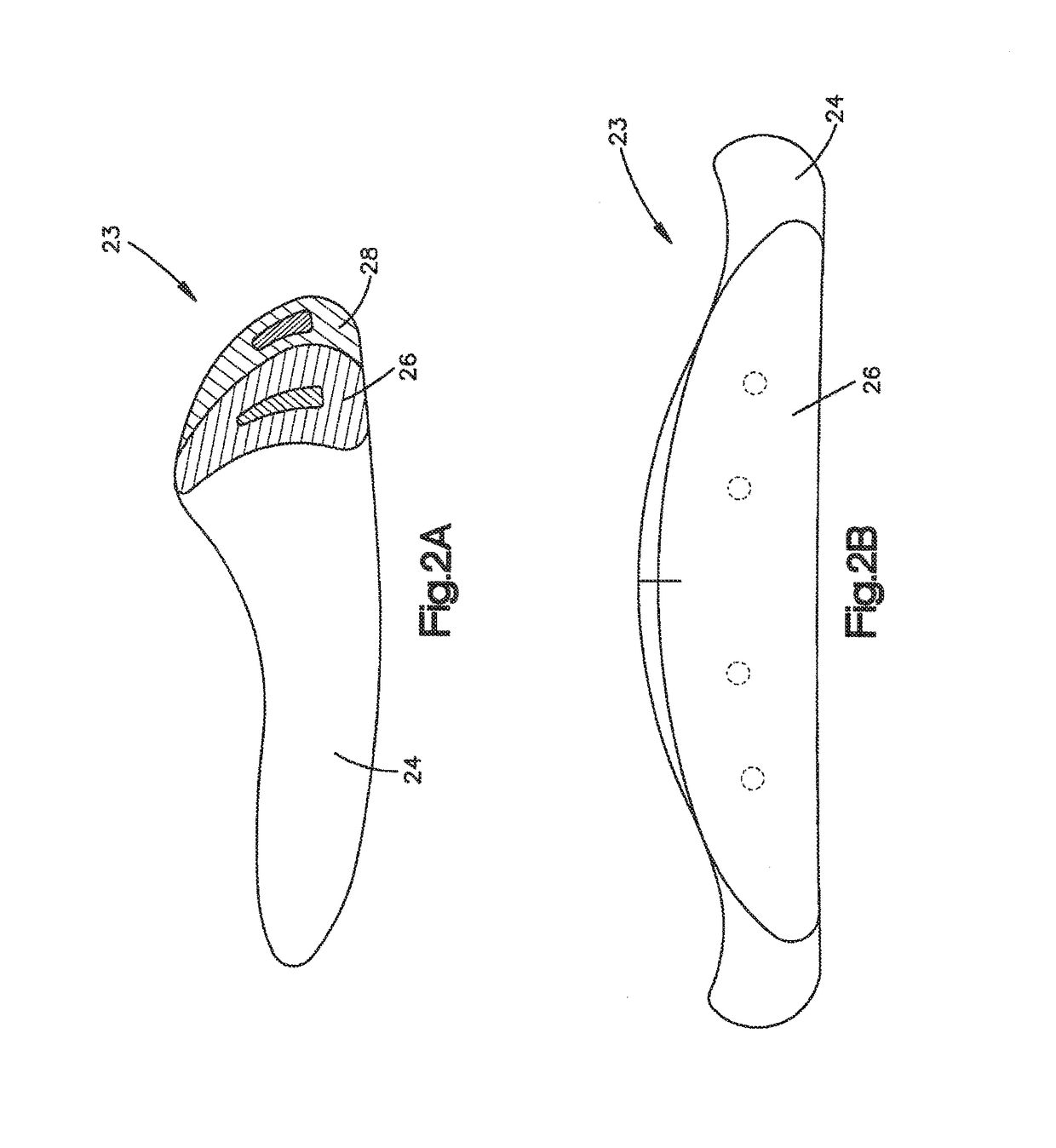Craniofacial surgery implant systems and methods
a technology of implant systems and craniofacial bones, applied in the field of surgical implants, can solve problems such as inability to meet patients, inconvenient operation, and inefficient current techniques, and achieve the effects of avoiding complications, avoiding complications, and avoiding complications
- Summary
- Abstract
- Description
- Claims
- Application Information
AI Technical Summary
Benefits of technology
Problems solved by technology
Method used
Image
Examples
Embodiment Construction
[0057]According to various embodiments of this invention, implants can be made in multiple mating pieces to reduce the inventory of implants required, while providing a high level of customization with limited sculpting or custom shimming by the surgeon during the implant procedure. While porous polyethylene material may be used, the invention is not limited in this regard and any suitable biocompatible material may be employed (e.g., rigid or flexible, porous or nonporous, polymer or nonpolymer, etc.). The implants of the present invention may be provided in kit form with or without fasteners and / or conventional or specialized surgical instruments described herein.
[0058]A first embodiment, an example of which is shown in FIG. 1, provides implants with adjustable projection. A two or more piece layered configuration provides controlled variability in the amount of augmentation provided by a single implant. In general, this embodiment relates to a craniofacial implant 10 including a ...
PUM
 Login to View More
Login to View More Abstract
Description
Claims
Application Information
 Login to View More
Login to View More - R&D
- Intellectual Property
- Life Sciences
- Materials
- Tech Scout
- Unparalleled Data Quality
- Higher Quality Content
- 60% Fewer Hallucinations
Browse by: Latest US Patents, China's latest patents, Technical Efficacy Thesaurus, Application Domain, Technology Topic, Popular Technical Reports.
© 2025 PatSnap. All rights reserved.Legal|Privacy policy|Modern Slavery Act Transparency Statement|Sitemap|About US| Contact US: help@patsnap.com



